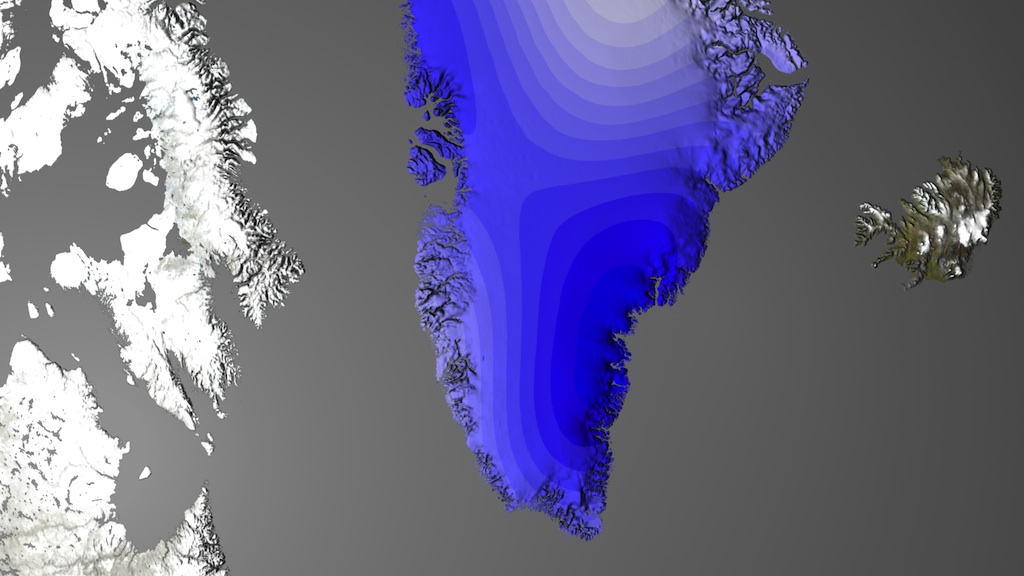Earth
ID: 10952

Giant ice sheets cover Antarctica and Greenland, holding 99 percent of the world's freshwater ice. But the ice sheets are giving up this water, as glaciers accelerate their journey to the sea and warmer air and ocean currents melt the ice. Orbiting 300 miles above Earth, NASA's twin GRACE (Gravity Recovery and Climate Experiment) satellites measure precisely how much these ice reservoirs are contributing to sea level rise. Measurements show Antarctica and Greenland are shedding roughly 385 billion tons of ice each year—that's more than 10 times the annual ice losses from Himalayan glaciers. This is causing global ocean waters to rise by about 0.04 inches each year. Watch the visualization below to see how the ice masses covering Greenland and Antarctica changed from 2003 to 2010.



The Biggest Losers




Related Story
For More Information
Story Credits
Visualizer/Animator:
Cindy Starr (Global Science and Technology, Inc.)
Producers:
Alan Buis (NASA/JPL CalTech)
Patrick Lynch (Wyle Information Systems)
Lead Scientists:
John Wahr (Department of Physics and Cooperative Institute for Research in Environmental Sciences, University of Colorado at Boulder)
Thomas Jacob (Department of Physics and Cooperative Institute for Research in Environmental Sciences, University of Colorado at Boulder)
W. Tad Pfeffer (Institute of Arctic and Alpine Research/Environmental, and Architectural Engineering, University of Colorado at Boulder)
Sean Swenson (National Center for Atmospheric Research, Boulder)
Project Support:
James W. Williams (GST)
Lead Writer:
Maria-Jose Vinas Garcia (Telophase)
Cindy Starr (Global Science and Technology, Inc.)
Producers:
Alan Buis (NASA/JPL CalTech)
Patrick Lynch (Wyle Information Systems)
Lead Scientists:
John Wahr (Department of Physics and Cooperative Institute for Research in Environmental Sciences, University of Colorado at Boulder)
Thomas Jacob (Department of Physics and Cooperative Institute for Research in Environmental Sciences, University of Colorado at Boulder)
W. Tad Pfeffer (Institute of Arctic and Alpine Research/Environmental, and Architectural Engineering, University of Colorado at Boulder)
Sean Swenson (National Center for Atmospheric Research, Boulder)
Project Support:
James W. Williams (GST)
Lead Writer:
Maria-Jose Vinas Garcia (Telophase)
Please give credit for this item to:
NASA's Goddard Space Flight Center
NASA's Goddard Space Flight Center
Short URL to share this page:
https://svs.gsfc.nasa.gov/10952
Mission:
Gravity Recovery and Climate Experiment (GRACE)
Data Used:
Note: While we identify the data sets used in these visualizations, we do not store any further details nor the data sets themselves on our site.
Keywords:
SVS >> App
NASA Science >> Earth
https://svs.gsfc.nasa.gov/10952
Mission:
Gravity Recovery and Climate Experiment (GRACE)
Data Used:
Gravity Recovery and Climate Experiment (GRACE)
Keywords:
SVS >> App
NASA Science >> Earth








